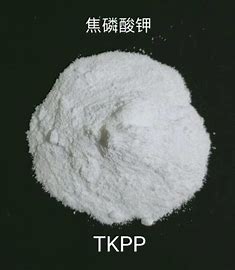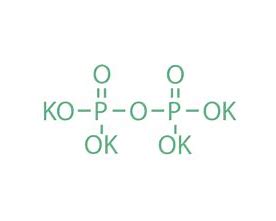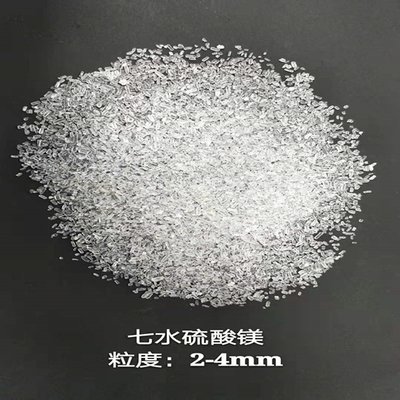Lithium hydroxide(LiOH)MSDS
I. Identification of the Chemical
1.1 GHS Product Identification
Product Name: Lithium hydroxide
1.2 Other Identification Information
Other Names: Lithium hydrate; Lithium hydroxide (inorganic compound)
1.3 Recommended Use and Restrictions of the Chemical
Determined Use: For industrial and scientific research purposes.
Not Recommended Use: No data available.
1.4 Supplier Details
Company: Chongqing Yuhan Technology
1.5 Emergency Contact Number
Emergency Contact Number: +86 17338321973
II. Hazards Overview
2.1 Classification of the Substance or Mixture
- Acute toxicity – Category 4, Oral
- Skin corrosion, Sub-category 1B
- Serious eye damage, Category 1
2.2 GHS Label Elements, including Precautionary Statements
- Pictogram:
- Signal Word: Danger
- Hazard Statements:
- H302 Harmful if swallowed
- H314 Causes severe skin burns and eye damage
- Precautionary Statements:
- Prevention: Wash thoroughly after operation. Do not eat, drink or smoke when using this product. Do not inhale dust/fume/gas/mist/vapours. Wear protective gloves, protective clothing, eye protection, and hearing protection, etc.
- Response: If swallowed, seek medical help. Rinse the mouth. If swallowed, rinse the mouth. Do not induce vomiting. Wash contaminated clothes before reuse. If inhaled, move to fresh air and keep breathing comfortably. Seek emergency medical assistance immediately. Specific treatment (see instructions on this label). If it gets into the eyes, carefully rinse with water for several minutes. If wearing contact lenses and they can be easily removed, take them out and continue rinsing.
- Storage: Keep locked up.
- Disposal: Dispose of the contents/container at an appropriate treatment and disposal site according to applicable laws and regulations.
2.3 Other Hazards not Resulting in Classification
No data available.
III. Composition/Ingredient Information
3.1 Substances
| Chemical Name | Common Names and Synonyms | CAS Number | EC Number | Concentration |
|---|---|---|---|---|
| Lithium hydroxide | Lithium hydroxide | 1310 – 65 – 2 | 215 – 183 – 4 | 100% |
IV. First Aid Measures
4.1 Description of Necessary First Aid Measures
- Inhalation: Move to fresh air, rest, and maintain a semi-upright position. Artificial respiration may be required. Seek medical attention immediately.
- Skin Contact: Remove contaminated clothing and rinse the skin with a large amount of water or take a shower for at least 15 minutes. Seek medical attention immediately.
- Eye Contact: Rinse with a large amount of water (remove contact lenses if possible). Seek medical attention immediately.
- Ingestion: Rinse the mouth. Do not induce vomiting. Drink one or two glasses of water. Seek medical attention immediately.
4.2 Most Important Acute and Delayed Symptoms/Effects
Excerpt from ERG Guide 154 [Substances – Toxic and/or Corrosive (Non-combustible)]: Toxic; inhalation, ingestion or skin contact with this substance may cause severe injury or death. Contact with the molten substance may cause severe burns to the skin and eyes. Avoid any skin contact. The effects of contact or inhalation may be delayed. Fire may produce irritating, corrosive and/or toxic gases. The runoff from firefighting or dilution water may be corrosive and/or toxic and cause pollution. (ERG, 2016)
4.3 Indications for Immediate Medical Attention and Special Treatment (if necessary)
No data available.
V. Fire-fighting Measures
5.1 Suitable Extinguishing Media
Excerpt from ERG Guide 154 [Substances – Toxic and/or Corrosive (Non-combustible)]: For small fires: dry chemical, carbon dioxide or water mist. For large fires: dry chemical, carbon dioxide, alcohol-resistant foam or water mist. If there is no danger, move the container away from the fire area. Dike the firefighting water for subsequent treatment; do not discharge it casually. In case of a fire involving tanks or car/trailer loads: fight the fire from the maximum distance or use unmanned hose holders or monitor nozzles. Do not let water enter the container. Cool the container with a large amount of water until the fire is completely extinguished. Evacuate immediately if the safety valve makes a sound or the tank changes color. Always stay away from tanks engulfed in fire. (ERG, 2016)
5.2 Special Hazards Caused by the Chemical
Excerpt from ERG Guide 154 [Substances – Toxic and/or Corrosive (Non-combustible)]: Non-combustible. The substance itself does not burn, but it may decompose when heated to produce corrosive and/or toxic fumes. Some are oxidizing agents and may ignite combustible materials (such as wood, paper, oil, clothing, etc.). Contact with metals may release flammable hydrogen gas. The container may explode when heated. For electric vehicles or equipment, ERG Guide 147 (lithium-ion batteries) or ERG Guide 138 (sodium batteries) should also be consulted. (ERG, 2016)
5.3 Special Protective Measures for Firefighters
In case of a fire around, use appropriate extinguishing media.
VI. Accidental Release Measures
6.1 Personal Protection Measures, Protective Equipment and Emergency Procedures
Personal Protection: Wear a chemical protective suit including a self-contained breathing apparatus. Prevent this chemical from entering the environment. Sweep the spilled substance into covered plastic containers. Carefully collect the remaining substance. Then store and dispose of it according to local regulations.
6.2 Environmental Prevention Measures
Personal Protection: Wear a chemical protective suit including a self-contained breathing apparatus. Prevent this chemical from entering the environment. Sweep the spilled substance into covered plastic containers. Carefully collect the remaining substance. Then store and dispose of it according to local regulations.
6.3 Methods for Containing and Cleaning up the Leakage
Collect and arrange for disposal. Store the chemical in suitable closed containers for disposal. Eliminate all ignition sources. Use explosion-proof tools and equipment. Adhered or collected materials should be disposed of in a timely manner in accordance with relevant laws and regulations.
VII. Handling and Storage
7.1 Safety Precautions for Handling
Operate in a well-ventilated area. Wear appropriate protective clothing. Avoid contact with skin and eyes. Prevent the formation of dust and aerosols. Use spark-free tools. Prevent fires caused by electrostatic discharge.
7.2 Safe Storage Conditions, including Incompatible Substances
Store separately from food and feed, strong oxidizing agents and strong acids. Store only in the original container. Keep dry. Seal well. Store in an area without drainage or sewers.
VIII. Exposure Controls and Personal Protection
8.1 Control Parameters
- Occupational Exposure Limits
| Component | CAS Number | 8-hour Limit (ppm) | 8-hour Limit (mg/m³) | Short-term Limit (ppm) | Short-term Limit (mg/m³) | Remarks |
|–|–|–|–|–|–|–|
| Lithium hydroxide | 1310 – 65 – 2 | – | 1 | – | – | In Ireland, the reference period for the short-term limit is 15 minutes. | - Biological Limit Values: No data available.
8.2 Engineering Control Measures
Ensure sufficient ventilation. Operate in accordance with good industrial hygiene and safety practices. Set up emergency exits and risk elimination areas.
8.3 Personal Protection Measures, such as Personal Protective Equipment (PPE)
- Eye/Face Protection: Wear a face shield or eye protection device used in combination with respiratory protection equipment.
- Skin Protection: Protective gloves, protective clothing.
- Respiratory Protection: Use local exhaust or respiratory protection equipment.
- Thermal Hazards: No data available.
IX. Physical and Chemical Properties and Safety Characteristics
| Item | Details |
|---|---|
| Physical State | Solid, crystalline |
| Color | White |
| Odor | No data available |
| Melting Point/Freezing Point | 423.93°C (at normal pressure: 1013.25 hPa) |
| Boiling Point or Initial Boiling Point and Boiling Range | 221°C (lit.) |
| Flammability | Non-combustible |
| Lower and Upper Explosion Limits/Flammability Limits | No data available |
| Flash Point | 79°C (lit.) |
| Auto-ignition Temperature | No data available |
| Decomposition Temperature | 924°C |
| pH Value | No data available |
| Kinematic Viscosity | No data available |
| Solubility (in water at 20°C, g/100ml) | 12.8 (good) |
| Partition Coefficient n-octanol/water | No data available |
| Vapor Pressure (at 20°C) | Negligible |
| Density and/or Relative Density | 1.5 g/cm³ |
| Relative Vapor Density | No data available |
| Particle Characteristics | No data available |
X. Stability and Reactivity
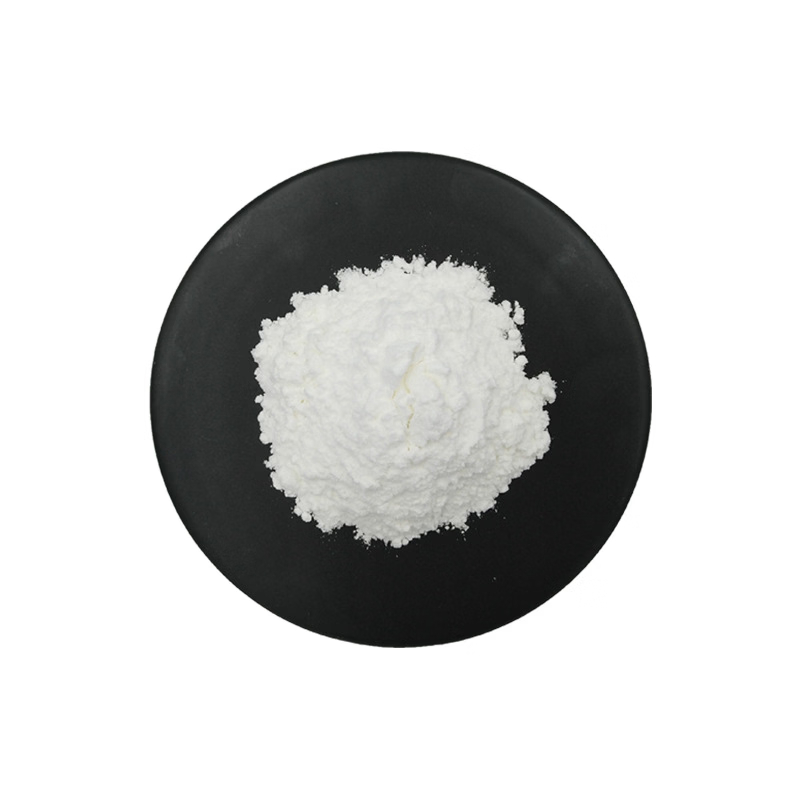
10.1 Reactivity
Decomposes when heated above 924°C, producing toxic fumes. Its aqueous solution is a strong base. Reacts violently with acids and is corrosive to aluminum, tin and zinc, generating flammable/explosive gas (hydrogen – see ICSC 0001). Reacts with strong oxidizing agents.
10.2 Chemical Stability
No data available.
10.3 Possibility of Hazardous Reactions
Lithium hydroxide solution undergoes an exothermic reaction with acids to form salts and water. Reacts with certain metals (such as aluminum and zinc) to form metal oxides or hydroxides and generate gaseous hydrogen. May initiate polymerization reactions in polymerizable organic compounds, especially epoxides. Reactions with ammonium salts, nitrides, halogenated organic compounds, various metals, peroxides and hydroperoxides may produce flammable and/or toxic gases. May act as a catalyst. When heated above approximately 84°C, it reacts with aqueous solutions of reducing sugars other than sucrose to release toxic levels of carbon monoxide [Bretherick, 5th Ed., 1995].
10.4 Conditions to Avoid
No data available.
10.5 Incompatible Substances
No data available.
10.6 Hazardous Decomposition Products
No data available.
XI. Toxicological Information
| Item | Details |
|---|---|
| Acute Toxicity (Oral) | LD50 – 526 mg/kg bw, rat; Acta Pharm 1980 |
| Acute Toxicity (Inhalation) | LC50 – rat (male/female) – > 6.15 mg/L air (analytical value) |
| Acute Toxicity (Skin Contact) | LD50 – rat (male/female) – > 2000 mg/kg bw |
| Skin Corrosion/Irritation | No data available |
| Serious Eye Damage/Irritation | No data available |
| Respiratory or Skin Sensitization | No data available |
| Germ Cell Mutagenicity | No data available |
| Carcinogenicity | No data available |
| Reproductive Toxicity | No data available |
| Specific Target Organ Toxicity – Single Exposure | The substance is corrosive to the eyes, skin and respiratory tract. Corrosive upon ingestion. Inhalation may cause pulmonary edema, but this only manifests after initial corrosive effects on the eyes and/or respiratory tract. |
| Specific Target Organ Toxicity – Repeated Exposure | No data available |
| Inhalation Hazard | Evaporation at 20°C is negligible; however, a harmful concentration of airborne particles can be rapidly reached when dispersed. |
XII. Ecological Information
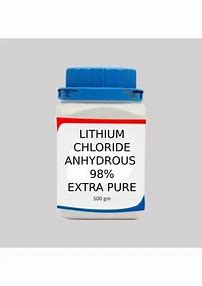
12.1 Toxicity
- Toxicity to Fish: LC50 – Danio rerio – 109 mg/L – 96 h (Note: Lithium hydroxide monohydrate)
- Toxicity to Daphnia and Other Aquatic Invertebrates: EC50 – Daphnia magna – 19.1 mg/L – 48 h (Note: Anhydrous lithium hydroxide)
- Toxicity to Algae: EC50 – Pseudokirchneriella subcapitata – 41.62 mg/L – 72 h
- Toxicity to Microorganisms: EC50 – Activated sludge – 180.8 mg/L – 3 h (Note: Anhydrous lithium hydroxide)
XIII. Disposal Considerations
13.1 Disposal Methods
- Product: Transport the substance to a qualified chemical destruction factory, or dispose of it by controlled incineration with flue gas purification equipment. Do not contaminate water, food, feed or seeds during storage or disposal. Do not discharge into the sewer system.
- Contaminated Packaging: Rinse the container three times (or equivalent treatment) and use it for recycling or refurbishment. Alternatively, puncture the packaging to make it unusable for other purposes and then dispose of it in a sanitary landfill. Combustible packaging materials can be disposed of by controlled incineration with flue gas purification equipment.
XIV. Transport Information
| Item | Details |
|---|---|
| UN Number | ADR/RID: UN2679 (For reference only, please verify) IMDG: UN2679 (For reference only, please verify) IATA: UN2679 (For reference only, please verify) |
| UN Proper Shipping Name | ADR/RID: Lithium hydroxide solution (For reference only, please verify) IMDG: Lithium hydroxide solution (For reference only, please verify) IATA: Lithium hydroxide solution (For reference only, please verify) |
| Transport Hazard Class | ADR/RID: 8 (For reference only, please verify) IMDG: 8 (For reference only, please verify) IATA: 8 (For reference only, please verify) |
| Packaging Group | ADR/RID: II (For reference only, please verify) IMDG: II (For reference only, please verify) IATA: II (For reference only, please verify) |
| Environmental Hazard | ADR/RID: None IMDG: None IATA: None |
| Special Precautions for Users | No data available |
| Bulk Transport according to IMO Instruments | No data available |
XV. Regulatory Information
| Chemical Name | Common Names and Synonyms | CAS Number | EC Number | Regulatory Inclusion Status |
|---|---|---|---|---|
| Lithium hydroxide | Lithium hydroxide | 1310 – 65 – 2 | 215 – 183 – 4 | Listed in the European Inventory of Existing Commercial Chemical Substances (EINECS); Listed in the EU Chemical Inventory (EC Inventory); Listed in the US Toxic Substances Control Act (TSCA) Inventory; Listed in the China Catalog of Hazardous Chemicals 2015; Listed in the New Zealand Inventory of Chemicals (NZIoC); Listed in the Philippines Inventory of Chemicals and Chemical Substances (PICCS); Listed in the Vietnam National Chemical Inventory; Listed in the Chinese Chemical Inventory of Existing Chemical Substances (China IECSC); Listed in the Korea Existing Chemicals List (KECL) |
XVI. Other Information
Revision Information
- Creation Date: July 15, 2019
- Revision Date: July 15, 2019
Abbreviations and Acronyms
CAS: Chemical Abstracts Service
ADR: European Agreement concerning the International Carriage of Dangerous Goods by Road
RID: Regulation concerning the International Carriage of Dangerous Goods by Rail
IMDG: International Maritime Dangerous Goods
IATA: International Air Transport Association
TWA: Time Weighted Average
STEL: Short-term Exposure Limit
LC50: Lethal Concentration 50%
LD50: Lethal Dose 50%
EC50: Effective Concentration 50%
References
- IPCS – International Chemical Safety Cards (ICSC), website: http://www.ilo.org/dyn/icsc/showcard.home
- HSDB – Hazardous Substances Data Bank, website: https://toxnet.nlm.nih.gov/newtoxnet/hsdb.htm
- IARC – International Agency for Research on Cancer, website: http://www.iarc.fr/
- eChemPortal – The Global Portal to Information on Chemical Substances by OECD, website: http://www.echemportal.org/echemportal/index?pageID=0&request_locale=en
- CAMEO Chemicals, website: http://cameochemicals.noaa.gov/search/simple
- ChemIDplus, website: http://chem.sis.nlm.nih.gov/chemidplus/chemidlite.jsp
- ERG – Emergency Response Guidebook by the US Department of Transportation, website: http://www.phmsa.dot.gov/hazmat/library/erg
- Germany GESTIS Database on Hazardous Substances, website: http://www.dguv.de/ifa/gestis/gestis-stoffdatenbank/index-2.jsp
- ECHA – European Chemicals Agency, website: https://echa.europa.eu/

